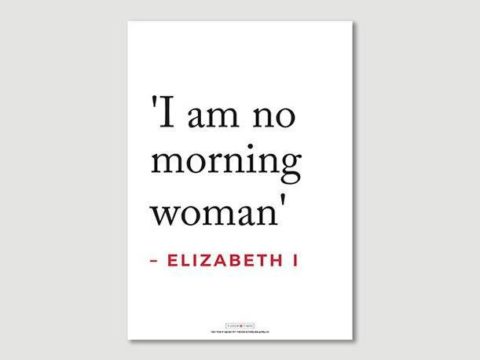Anne of Denmark: Life Story
Chapter 2 : Marriage Negotiations
Negotiations recommenced in 1585, with Frederick’s opening gambit being to send an ambassador with a ship of 120 tons as a gift to James. This was quickly reported from the Scottish court to the English and the English ambassador in Edinburgh received instructions to call upon the Danish ambassador, in recognition of Queen Elizabeth’s friendship for that country – in reality, to find out what was going on.
The Danish delegation, consisting of two accredited ambassadors, named Parsberg and Billon, and a lawyer (Dr Theophilus), were granted an audience by James at Dunfermline. Their official mission was to request the return of Orkney and Shetland on payment of the outstanding 50,000 ducats from Margaret of Denmark’s dowry.
In February 1586, Queen Mary said that she had heard James had sent a rich jewel to Denmark as a token of his intentions.
By May 1586, James was preparing his own embassy to send to Denmark. On 20th June, Peter Day set forth from Dundee, arriving at Elsinore in Denmark on 26th of the month. On his arrival, he found that Frederick was away, involved in marriage negotiations for other family members in Saxony. He had, however, left orders that any ambassadors arriving in his absence were to be rested for several days, and then sent on to Copenhagen to be greeted by the Danish Lord Treasurer. Queen Sophie, together with Anne and her siblings, and the Duke and Duchess of Mecklenburg-Gustrow, were at Frederiksborg. The building Anne knew was replaced by the current palace by her brother in the early seventeenth century.
In August 1587, a further embassy was sent, and returned with the news that Frederick would agree to a match, but only on the proviso that there should be no attempt by James to hasten his succession in England. Frederick preferred James to take Anne, as Elizabeth was already half-promised elsewhere, although, if that match fell through, James could choose for himself. The ambassadors were not permitted to see either Queen Sophie or the princesses.
This lukewarm reception from Denmark led the Scottish informer of Sir Francis Walsingham, one of Elizabeth’s chief ministers, to think that James would turn his attention to a Spanish marriage.
Relationships had deteriorated between Scotland and England after the execution of Mary, Queen of Scots, and in October 1587, Elizabeth wrote to Archibald Douglas, 8th Earl of Angus, who had spent some time as an exile in England, that she was shocked and disappointed to hear that James, under the pretext of discussing a marriage, had asked Frederick to harry English shipping. Whether or not such a request had been made, Frederick certainly did not want to become embroiled in a quarrel with England and is reported to have rejected the notion.
Whether such a rebuff was, in fact, received, James was not fixed on the idea of a Danish match and he was willing to consider other possible alliances, including with the Duke of Lorraine’s daughter, a Princess of Spain, or, most likely to appeal to his subjects, the Calvinist Catherine of Bourbon, sister of King Henri of Navarre.
There is a long explanation of the necessity for James to marry and the pros and cons of the various princesses available in the Calendar of State Papers for Scotland Vol 8 No. 568. It is clearly written by someone with strong ties to Navarre – perhaps the paper rehearses the arguments that were to be used to persuade James to marry Catherine. In particular her dowry was superior to that of the Danish princesses, consisting of revenues as well as immediate cash, whilst their dowries were cash only. Additionally, the King of Denmark could not offer so much largesse to the Scots nobles as Henri of Navarre would, should he become King of France, which was widely anticipated.
Finally, the writer proposed what he obviously sees as a clinching argument – in the event of the death of Queen Elizabeth of England, James would need strong support to maintain his claims to inherit her throne. France would be both more able, and more willing, to help him. These of course, would be the very reasons why Elizabeth would dislike a marriage with Navarre, despite Catherine being a Calvinist.
In April 1588, King Frederick died. Anne’s brother was now proclaimed as King Christian IV, but aged only eleven, he was in no position to rule himself. Whilst Queen Sophie sought to be Regent, this was refused, and a Regency Council was implemented instead, although Sophie gained the position of Regent of Schleswig-Holstein in 1590. The Regency Council continued its negotiations for the marriages of the princesses.
By November 1588, it was agreed that Anne’s elder sister was to be despatched in marriage to the Duchy of Brunswick-Wulfenbuttel, and negotiations with Scotland were now centred on Anne, who was to have a fine dowry.
In December 1588, it was reported to Walsingham by his secret correspondent, Robert Aston, that Colonel Stewart, a close associate of James’, had been to Denmark about the King’s marriage. Stewart was pushing it forward and it was likely to take place, Aston thought, although he had also heard that the Danish Council recommended that Elizabeth I’s express approval should be given, although they would still continue with the matter, even if she did not grant her blessing.
James himself was not eager to marry, but his Council was putting pressure on him. Apparently he ‘never regardes the company of any woman, not so much as in any dalliance.’ The majority of the Scots Council favoured a match with Denmark, although there was minority support for Catherine of Bourbon.
Anne of Denmark
Family Tree




